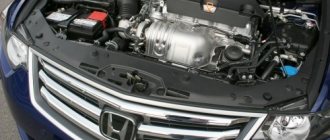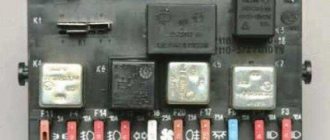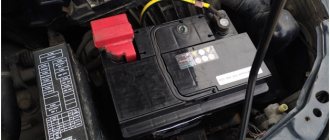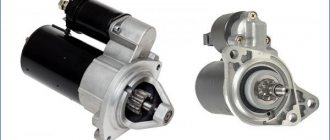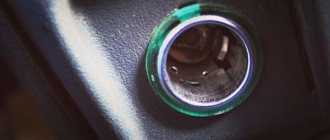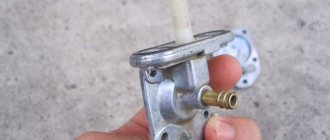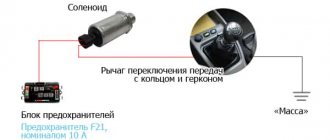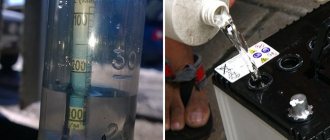Characteristic
Every car has an ignition system. However, it's not just spark plugs, a coil and armored wires. This system also includes a starter. The VAZ-2115 is also equipped with it. On Samara-2 cars it is of a gear type. The element is assembled with a traction relay and a drive mechanism.
The starter interacts with the ignition switch and the engine, being a kind of intermediate link. The main purpose of the element is to create the necessary torque for the engine, which will give the internal combustion engine the ability to work independently.
Device
The VAZ-2115 starter itself consists of the following elements:
- Stator.
- Rotor (armature).
- Contact plate.
- Brushes with holder.
- Traction relay.
- Drive mechanism.
Power is supplied to the starter windings through a traction relay. So, when you turn the ignition key, a starting current (about 500 amperes) flows from the battery to the relay. Next, this mechanism moves the drive element.
The engagement includes the starter drive gear and the flywheel ring gear. A few revolutions are enough for the unit to start successfully (of course, if you have a working starter). VAZ-2115 has a simple design of this element. However, malfunctions with it should not be ruled out. So, let's look at why the starter on a VAZ-2115 car does not start and what to do about it.
VAZ starter: general concepts
The starter, developed at VAZ for the 2114 model, is an original part and is, in fact, an electric motor running on direct electric current, equipped with such attachments as:
- overrunning clutch;
- gear (bendix for engagement with flywheel teeth);
- solenoid relay.
Starter device
This device operates on the following principle: after turning the ignition key, a current is sent to the solenoid relay, which creates the necessary magnetic field for the subsequent movement of the armature attached to the plug. The latter moves the Bendix gear along the rotor shaft passing in the electric motor, until the moment when it engages with the toothed part of the flywheel.
Having entered completely into the relay, the described armature closes all contacts, which leads to the supply of electric current to the engine itself that is turning on. The overrunning clutch has its own task: it is designed to protect the electric motor, since after the main engine starts, the rotation speed of the flywheel is much higher than that of the Bendix, which leads to the opposite result: the flywheel spins the gear.
Bendix starter VAZ 2114
To ensure that this reverse force is not transmitted to the starter, after reaching a certain rotation speed, the gear begins to rotate freely on the axis until the power to the solenoid relay is manually turned off.
Starter retractor relay VAZ 2114
This action by the driver causes the spring to return the gear to its original position, removing it from the clutch to eliminate unnecessary loads.
Doesn't turn at all
If, when you turn on the ignition, the armature does not rotate and the traction relay does not operate, check the voltage in the battery. A minimum of 12 volts is required to start successfully. The starter takes a lot of energy from the battery. That's why it's so important to keep it in good condition. There are several ways to check the voltage on the battery. The best method is a multimeter. When the contacts are closed, the device will display the result. But if there is no such device, and there is no voltage indicator on the panel, you can use the old-fashioned method. To do this, take a 12-volt car light bulb and a pair of wires. With bare contacts it is closed to the terminals. If the voltage is 12 volts, it will light up properly. Anything less will burn very dimly.
The next reason why the traction relay does not turn on is loosely tightened wire tips (both on the battery side and on the starter side). Perhaps the contacts have oxidized there. Use a special cleaner or sandpaper. Experts do not rule out a break in the pull-in winding. If cleaning the contacts does not help and the starter does not turn, the VAZ-2115 requires replacing the traction relay. We'll look at how to do this at the end of the article.
How to keep the starter in working condition
In order not to bring the starter to condition when the above-described situations may occur in which it is impossible to start the car, it is necessary to follow a number of simple rules for its operation.
We turn the starter for no more than five to ten seconds, after which you need to take a mandatory pause for a couple of minutes. If you ignore this advice, you run the risk of instantly draining the battery and burning out a functioning starter if you overzealously try to start the engine.
Then nothing will save you from the need to buy a new starter, since if the windings burn out, their repair is unlikely to be cheaper. Moreover, it is often impossible to properly repair the starter in this case.
Don't forget, first of all, pay attention to the battery, maybe just charging it is enough. Leave the car for a couple of hours, and perhaps, after charging the battery, the problems will be solved and you can safely start the car and drive it according to your needs.
Check the contacts and clean the areas where the cables touch. Place special emphasis on the negative ground wire going to the car body.
Be that as it may, diagnosing the starter and repairing its individual elements will cost the car enthusiast much less than replacing it with a new, very expensive unit when purchased.
Pay attention to suspicious sounds when starting the engine, and this may help save you a considerable amount of money.
Noise when rotating armature
In this case, check the condition of the drive shaft and armature bearing liners. Replace worn elements. The starter may have become loose or its cover at one end may be broken. Because of this, the mechanism works incorrectly. Inspect the flywheel itself. There should be no wear on its teeth. If present, the flywheel needs to be replaced. It happens that the gear does not disengage with it. In this case, the cause of the malfunction is in the clutch. It jams on the shaft splines. The VAZ-2115 starter relay can work normally. Clean the splines and treat them with oil. This helps eliminate jamming.
Internal reasons why the starter may fail
A rare malfunction of the starter on a VAZ is the armature burning out. In this case, the winding breaks due to excess current. Such a breakdown cannot be repaired - all that remains is a complete replacement of the armature or the entire starter.
Mechanical failures may include:
- grinding of teeth;
- coupling wear;
- flywheel ring gear wear.
In all cases, the same symptom is present: a sharp metallic crackling sound during operation. The teeth slip, the resulting chips get stuck and create a characteristic sound.
Mechanical breakdowns cannot be repaired, because... It is impossible to restore the teeth. The cause of the malfunction, as a rule, lies in improper operation of the car, for example, in driving on the starter.
Also a characteristic feature: when you turn the key, the VAZ makes characteristic relay clicks, i.e. The electrical part is in perfect order.
There are often problems with brushes. If the relay clicks but the starter does not turn, this may indicate wear.
Brushes are graphite columns that transmit voltage from the stator to the rotor. An electromagnetic circuit appears inside, creating that same rotation. Over time, they wear off, causing the current to stop moving. Because Brushes are consumables; they can simply be replaced with new ones.
By the way, if these are brushes, try hitting them with the handle of a screwdriver. The blow will move them a little and the starter will start working again, but this is a temporary solution.
How to change a relay with your own hands?
To do this, we need to de-energize the on-board network - remove the terminals from the battery. Next, clean the surface of the starter from dust and dirt. Unscrew the nut from the relay and remove its contact. Unscrew the bolts securing the relay to the starter body. After this, remove the nuts from the end.
Next, you need to dismantle the old core and put a new one in its place. All elements are assembled in reverse order. It is important to check the operation of the new device immediately after repair. We install the starter in place, pump up the terminals and start the engine. The engine should start with half a turn (provided the battery is normally charged).
What should be done in this case?
To determine whether the starter is working, you need to directly jump the wires on it using a piece of thick copper wire. This test will determine the likely cause of a faulty wiring or starter solenoid relay.
If closing the contacts of the starter does not lead to anything, it means that the problem is in the retractor relay, and if the starter begins to rotate the crankshaft, it is necessary to inspect the wiring and electrical components involved in the operation of the starter.
To get to the solenoid relay, you need to remove the starter and repair or replace the damaged part. To do this, you need to prepare socket wrenches for 13, 10 and a screwdriver. Before removing the starter, it is necessary to turn off the power to the car to prevent a possible short circuit. The main thing in repair is safety.
In checking for damage to the wiring and auxiliary relays during the operation of the starter, it is necessary to inspect the wires going to the starter, check their connections and other equipment.
Also read other reviews
What else do you need to know about relays?
Since the starter consumes quite a powerful current, the integrity of its elements should be checked every 100 thousand kilometers or every 3 years. During this time, slight fluctuations in voltage may occur in the mechanism, which can cause the relay to fail.
You can check its functionality by a characteristic click. It happens that when starting, the starter continues to work. In this case, you will hear a sharp squeal. This indicates that the retractor has failed. The mechanism cannot return to its reverse position.

